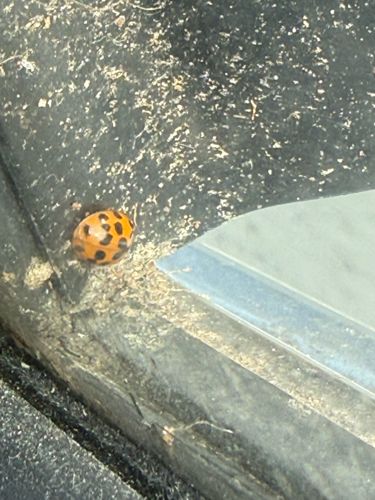Ladybug (or Ladybird beetle)
Scientific Name: Coccinellidae (family)
Order & Family: Order: Coleoptera, Family: Coccinellidae
Size: Typically 0.8 mm to 18 mm (0.03 to 0.7 inches) in length, though most common species are between 1-10 mm.

Natural Habitat
Gardens, agricultural fields, meadows, forests, and other areas with vegetation and prey insects (like aphids). They often overwinter in sheltered locations, sometimes indoors.
Diet & Feeding
Primarily predatory, feeding on soft-bodied insects like aphids, scale insects, mites, and mealybugs. Some species also consume pollen, nectar, or fungi.
Behavior Patterns
Ladybugs are solitary or gather in groups for overwintering. They lay eggs near aphid colonies, and the larvae are also voracious predators. When threatened, they can exude a foul-smelling, yellow fluid to deter predators.
Risks & Benefits
Benefits: Ladybugs are highly beneficial insects, acting as natural pest control in gardens and agriculture by preying on destructive pests. Risks: Some introduced species, like the Harlequin ladybug (Harmonia axyridis), can become invasive, outcompeting native ladybug species and sometimes congregating in homes during colder months, which can be a nuisance.
Identified on: 11/15/2025